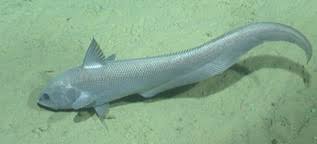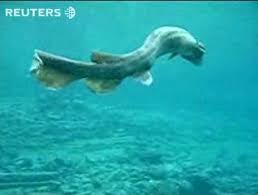Team members
Names / Roles:
Ryu [Leader]
Mingyan [Wiki writer]
Kian Wee [Researcher]
Overview
In this section, include a brief description of the allocated ecosystem. You should include the following information:
- Location of the ecosystem- The deeps sea is located in the abyssopelagic and beyond and the depth is so deep that no natural light can penetrate down to the darkness
- Description of ecosystem- The deep sea is the most unexplored environment on earth partially because of the challenges and the lack of technology which enables humans to explore this environment. The sea is divided to many zones , the Epipelagic , Mesopelagic , Bathypelagic , Abyssopelagic and the Hadopelagic. As no natural light can reach such a depth, plants cannot carry out photosynthesis thus plants do not exist in this environment. Life in this environment must depend on other sources from elsewhere except the areas close to the hydrothermal vents. With this energy, this energy comes from organic materials that drift down from the photic zone.
- Biodiversity of ecosystem (richness of life in ecosystem)- The deep sea has many types of creatures that most of us have never seen before , e.g. Rattail fish, Frilled shark, Angler fish, Tripod fish, Goblin shark, Barreleye fish etc.




 Angler fish Ghost shark Goblin shark Barreleye fish Frilled shark
Angler fish Ghost shark Goblin shark Barreleye fish Frilled shark
 Tripod fish
Tripod fish  Fangtooth
Fangtooth  Gulper eel
Gulper eel  The black swallower
The black swallower
 Dumbo octupus
Dumbo octupus  Grenadier fish
Grenadier fish  Giant isopod
Giant isopod  Amphipod
Amphipod
Physical Factors
Search the Internet for information on the following physical factors in the allocated ecosystem.
- Light (availability of sunlight in the ecosystem), ~no sunlight available or some light ( depend on the depth )
- Temperature (temperature of the ecosystem), ~ 2-4 degrees Celsius
- Water (water quality in the ecosystem),
- Salinity (freshwater or seawater found in the ecosystem).1-4% difference of salinity compared with surface seawater
- Air (quality of air in the ecosystem),
- pH of the environment (how acidic or alkaline the ecosystem is), 6-8 pH value
- mineral salts (availability of nutrients and mineral salts in the ecosystem) -N/A-
Classification of Living Organisms
Classify at least eight of the living organisms found in the allocated ecosystem into the categories below:
- Producers ~ Algae
 Algae is a plant like organism where chloroplast is present.
Algae is a plant like organism where chloroplast is present.
- Primary Consumer ~ Amphipod
 Has 13 body segments which is grouped into the head, thorax and abdomen
Has 13 body segments which is grouped into the head, thorax and abdomen
- Secondary Consumer ~ Fangtooth
 Usually small and hamrless to humans
Usually small and hamrless to humans
~ Grenadier Fish  There are about 400 species of grenadier fishes
There are about 400 species of grenadier fishes
~The Black Swallower It can swallow its prey which can be much larger than itself
It can swallow its prey which can be much larger than itself
~ Frilled Shark  Has a eel-like body with the dorsal, pelvic and anal fins placed as far back on its body
Has a eel-like body with the dorsal, pelvic and anal fins placed as far back on its body
4. Tertiary Consumer
~ Goblin Shark  The only shark with an unusual snout-shaped head
The only shark with an unusual snout-shaped head
~ Ghost Shark  Also known as Chimaera and is one of the oldest group of fishes alive today
Also known as Chimaera and is one of the oldest group of fishes alive today
For each of the living organism, find a picture and write a short description on the organism. You may wish to include feeding habits, region in the ecosystem where it is normally found etc.
Food Web
Create a food web using at least eight of the living organisms listed above. You may wish to use Microsoft PowerPoint to create your food web. Save your food web as a picture. Finally copy and paste your picture in this section of your wiki.

Interrelationship in Ecosystem
Give at least one example for each of the following relationships in the ecosystem:
- Predator-prey relationship: Fangtooth preys on the Amphipod
- Parasitism The male anglerfish attaches itself to the female anglerfish to gain nutrients and to give sperms (sexual cells) to the female to allow it to reproduce.
- Mutualism ~N/A~
Useful Links
Plagarism is a strongly discouraged.
Include the links of all websites you obtained information from to complete your ecology wiki.
For example:
Wild World @ nationalgeographic.com ( http://www.nationalgeographic.com/wildworld/terrestrial.html )
- [wikipedia.org] (wikipedia.org)
- [The deep sea, ocean biology] (marinebio.org)
- [top 25 dangerous deep sea creatures] (list25.com)
- [
Comments (1)
Mr Reuben Ng said
at 10:56 am on Apr 2, 2013
Very nice pictures, but are you sure there are no producers?
You don't have permission to comment on this page.